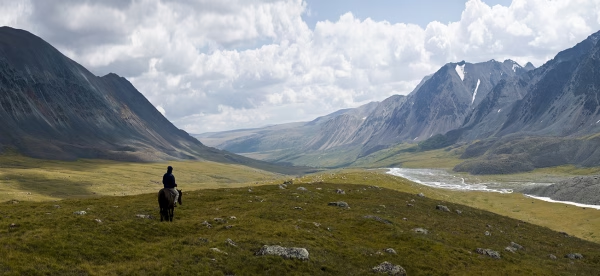A monumental archaeological discovery has been made in the windswept steppes of western Azerbaijan’s Ceyranchol region: a 3,800-year-old burial mound (kurgan) containing the remains of a Bronze Age warrior buried with a rare four-pronged spearhead has been unearthed.
The find was made during the fifth phase of the “Scientific-Archaeological Excavations and Summer School at Keshikchidagh” project — a joint initiative between the Ministry of Culture of the Republic of Azerbaijan and the Institute of Archaeology and Anthropology under the Azerbaijan National Academy of Sciences (ANAS).
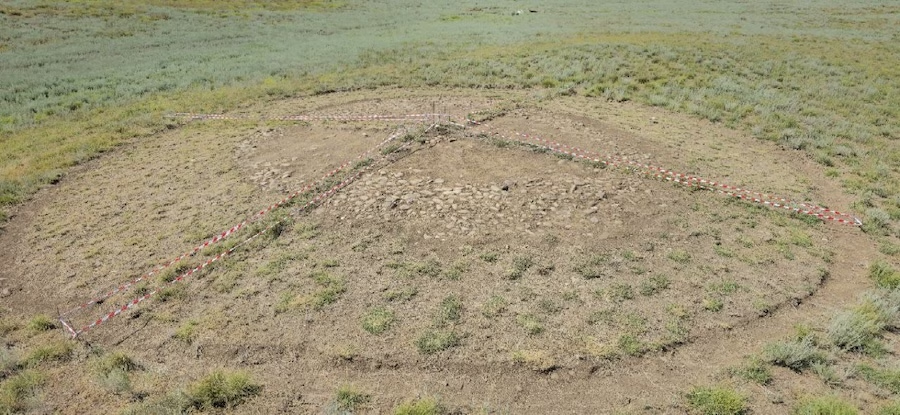
Massive Burial Mound in Yovshanlydere Region
The excavation focused on a monumental burial mound in the Yovshanlydere area of the Ceyranchol plain. Measuring 28 meters in diameter and 2 meters in height, the kurgan revealed a central burial chamber 6 meters long, 2 meters wide, and 3 meters deep. The chamber was symbolically divided into three sections: one for the human remains and weapons, one for pottery, and a third intentionally left empty — likely reflecting ancient spiritual beliefs about the afterlife.
The Keshikchidagh Warrior and His Unique Spear
The skeletal remains belonged to a tall male, estimated to be over 2 meters in height, buried in a semi-flexed position. What sets this burial apart is the presence of an exceptionally rare four-pronged bronze spearhead found in the warrior’s hand — a weapon type scarcely seen not only in Azerbaijan but throughout the South Caucasus region.
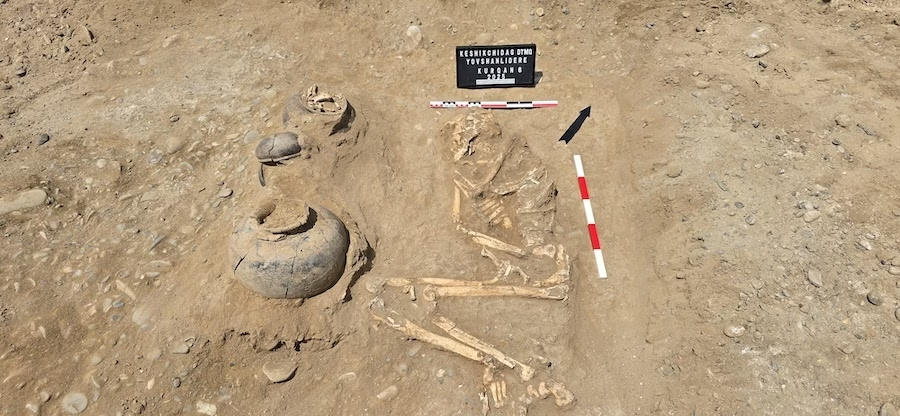
Other grave goods included:
- Bronze ankle ornaments
- Obsidian tools
- Bead fragments
- Twelve intricately decorated ceramic jugs with white inlays and geometric motifs
- Cooked bones from goat, horse, cattle, and wild boar — likely ritual offerings
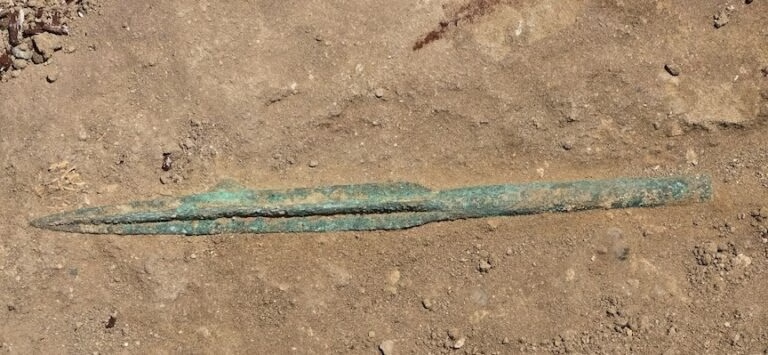
Symbolism and Administration in Stone
Above the chamber, archaeologists uncovered 14 massive limestone slabs, each weighing approximately one ton. Accompanying them were a bull-shaped stone idol and a circular limestone seal, suggesting a complex symbolic or administrative function tied to the burial — perhaps early notions of property, power, or spiritual guardianship.
Each artifact was carefully documented and graphically illustrated on-site. Fragile or broken pieces were meticulously restored during the excavation.
Future Research and Global Publication Plans
According to Associate Professor Dr. Farhad Guliyev, Director of the Institute of Archaeology and Anthropology, the site represents a major milestone in Azerbaijani archaeology. Plans are underway for advanced scientific analysis, including:
- Radiocarbon dating
- Isotopic analysis
- Metallographic studies
- Mineralogical testing
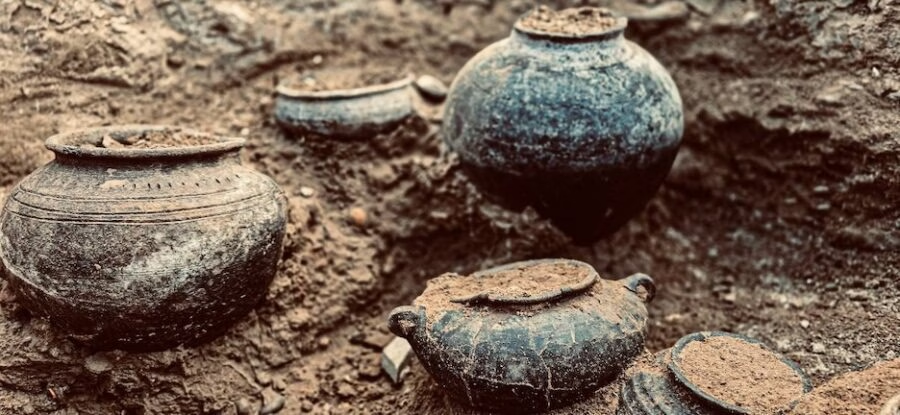
The research team is currently preparing a detailed monograph featuring photographs, illustrations, and scholarly commentary. The discovery is expected to make a significant impact in international archaeological journals.
Ministry of Culture of the Republic of Azerbaijan
Cover Image Credit: Ministry of Culture of the Republic of Azerbaijan

